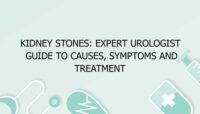Dysphagia, or difficulty swallowing, is a condition that affects a person’s ability to ingest food and liquids safely. It can range from mild discomfort to severe challenges that impact nutrition and quality of life. Understanding the symptoms, causes, and treatment options for dysphagia is essential for managing the condition effectively. This comprehensive guide explores all aspects of dysphagia, providing valuable insights and practical information.
Understanding Dysphagia
What is Dysphagia?
Dysphagia refers to the difficulty in swallowing, which can involve problems with any part of the swallowing process, from the mouth to the esophagus. It may manifest as pain while swallowing, a sensation of food being stuck in the throat, or choking. Dysphagia can significantly impact a person’s ability to eat and drink, potentially leading to complications such as aspiration pneumonia and malnutrition.
Symptoms of Dysphagia
1. Difficulty Swallowing Solid Foods
One of the primary symptoms of dysphagia is difficulty swallowing solid foods. This may involve a sensation of food getting stuck in the throat or chest. People with this symptom might also experience pain or discomfort while eating. The severity of this difficulty can range from mild discomfort to an inability to eat certain foods.
2. Painful Swallowing (Odynophagia)
Painful swallowing, known as odynophagia, is another common symptom of dysphagia. This pain can occur in the throat or chest and may be sharp or burning. It often accompanies other swallowing difficulties and can make eating and drinking a painful experience.
3. Choking or Coughing While Eating
Choking or coughing during meals can indicate dysphagia, especially if it happens frequently. This symptom occurs when food or liquids enter the airway instead of the esophagus, which can lead to aspiration. Aspiration increases the risk of aspiration pneumonia, a serious lung infection.
4. Regurgitation and Reflux
Regurgitation, or the backward flow of food or liquids from the esophagus into the mouth, is a symptom of dysphagia. It can be accompanied by acid reflux, where stomach acids irritate the esophagus. These symptoms can lead to discomfort and a feeling of burning in the chest.
5. Weight Loss and Malnutrition
Unintentional weight loss and malnutrition are serious concerns for individuals with dysphagia. Difficulty swallowing can lead to reduced food intake and inadequate nutrition, which may result in weight loss and deficiencies in essential nutrients.
Causes of Dysphagia
1. Neurological Conditions
Neurological conditions are a common cause of dysphagia. Disorders such as stroke, Parkinson’s disease, and multiple sclerosis can impair the nerves and muscles involved in swallowing. These conditions may lead to difficulty coordinating the swallowing process or weakened swallowing muscles.
2. Esophageal Disorders
Esophageal disorders can also cause dysphagia. Conditions such as gastroesophageal reflux disease (GERD), esophageal stricture, and esophageal cancer can obstruct or irritate the esophagus, making it difficult to swallow. Esophageal stricture involves narrowing of the esophagus, while GERD causes acid damage and inflammation.
3. Muscle Disorders
Muscle disorders that affect the muscles involved in swallowing can lead to dysphagia. Conditions such as dysphagia associated with myasthenia gravis or muscular dystrophy can weaken the swallowing muscles, impairing their function.
4. Head and Neck Cancer
Head and neck cancers, including cancers of the throat and esophagus, can cause dysphagia by directly affecting the structures involved in swallowing. Tumors can obstruct the esophagus or damage surrounding tissues, leading to difficulty swallowing.
5. Aging
As people age, the swallowing muscles and reflexes can weaken, contributing to dysphagia. Age-related changes in the esophagus, reduced saliva production, and decreased muscle strength can make swallowing more challenging.
Treatment for Dysphagia
1. Swallowing Therapy
Swallowing therapy, also known as speech-language pathology, is a common treatment for dysphagia. A speech-language pathologist (SLP) can provide exercises and techniques to improve swallowing function, strengthen the swallowing muscles, and enhance coordination. This therapy is tailored to address specific swallowing difficulties.
2. Dietary Modifications
Dietary modifications can help manage dysphagia by adapting food textures and consistencies to make swallowing easier. This may include consuming soft foods, thickened liquids, and avoiding hard or dry foods. A registered dietitian can provide guidance on appropriate dietary changes.
3. Medications
Medications may be prescribed to treat underlying conditions contributing to dysphagia. For example, medications for GERD can reduce acid reflux and inflammation, while muscle relaxants may help with muscle disorders affecting swallowing. Always consult a healthcare provider before starting any new medication.
4. Surgical Interventions
In some cases, surgical interventions may be necessary to address the underlying cause of dysphagia. For example, surgery may be required to remove tumors, correct esophageal strictures, or repair structural abnormalities. Surgical options are determined based on the specific diagnosis and severity of the condition.
5. Feeding Tube
For individuals with severe dysphagia who are unable to eat or drink safely, a feeding tube may be recommended. A feeding tube provides an alternative means of nutrition and hydration, bypassing the need for oral swallowing. This option is typically considered when other treatments have not been effective.
Frequently Asked Questions About Dysphagia
1. What is dysphagia?
Dysphagia is a condition characterized by difficulty swallowing food and liquids. It can involve pain, a sensation of food being stuck, choking, and other swallowing-related issues.
2. What are the common symptoms of dysphagia?
Common symptoms of dysphagia include difficulty swallowing solid foods, painful swallowing (odynophagia), choking or coughing while eating, regurgitation, and weight loss or malnutrition.
3. What causes dysphagia?
Dysphagia can be caused by various factors, including neurological conditions, esophageal disorders, muscle disorders, head and neck cancers, and aging. Identifying the underlying cause is crucial for effective treatment.
4. How is dysphagia diagnosed?
Dysphagia is diagnosed through a combination of medical history, physical examination, and diagnostic tests such as endoscopy, barium swallow studies, and esophageal manometry. A thorough evaluation by a healthcare provider is essential for accurate diagnosis.
5. What treatments are available for dysphagia?
Treatment options for dysphagia include swallowing therapy, dietary modifications, medications, surgical interventions, and feeding tubes. The appropriate treatment depends on the underlying cause and severity of the condition.
6. Can swallowing therapy help with dysphagia?
Yes, swallowing therapy, provided by a speech-language pathologist, can help improve swallowing function by offering exercises and techniques to strengthen the swallowing muscles and enhance coordination.
7. Are there dietary changes that can help with dysphagia?
Yes, dietary changes can help manage dysphagia. Modifying food textures and consistencies, such as consuming soft foods and thickened liquids, can make swallowing easier and reduce the risk of aspiration.
8. Can medications treat dysphagia?
Medications may be prescribed to treat underlying conditions contributing to dysphagia. For example, medications for GERD can reduce acid reflux and inflammation, improving swallowing ability.
9. When is surgery necessary for dysphagia?
Surgery may be necessary when dysphagia is caused by structural abnormalities, tumors, or strictures in the esophagus. Surgical options are considered based on the specific diagnosis and severity of the condition.
10. What is a feeding tube, and when is it used?
A feeding tube is an alternative means of providing nutrition and hydration when oral swallowing is not possible or safe. It is used for individuals with severe dysphagia who cannot eat or drink effectively. The decision to use a feeding tube is based on the severity of dysphagia and overall health considerations.


